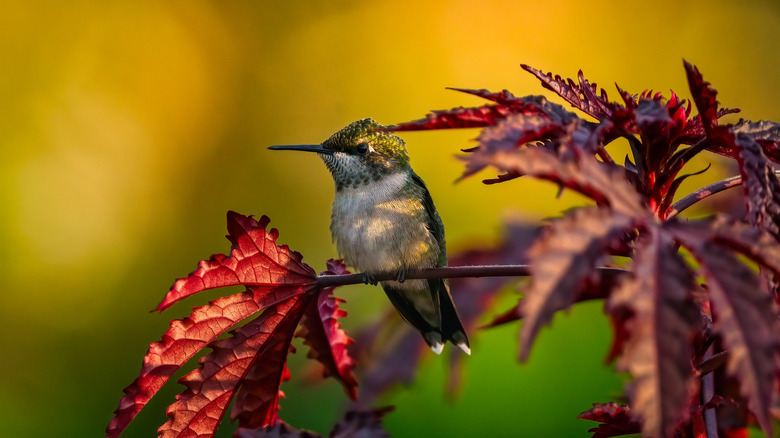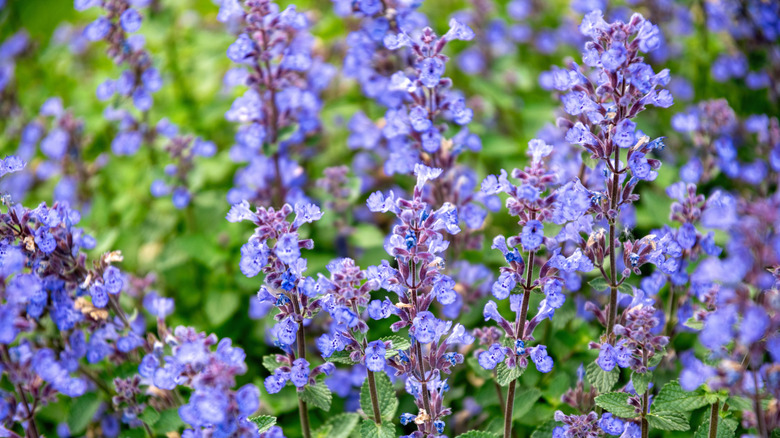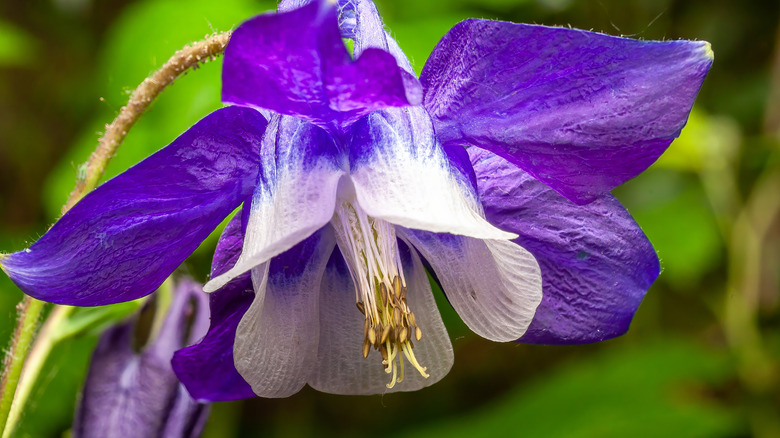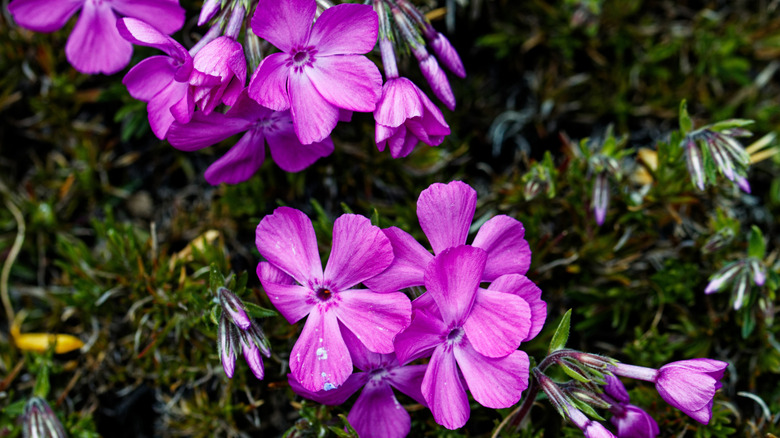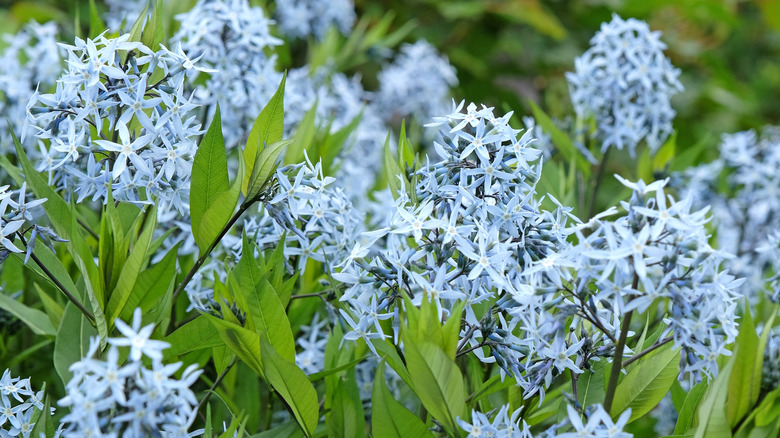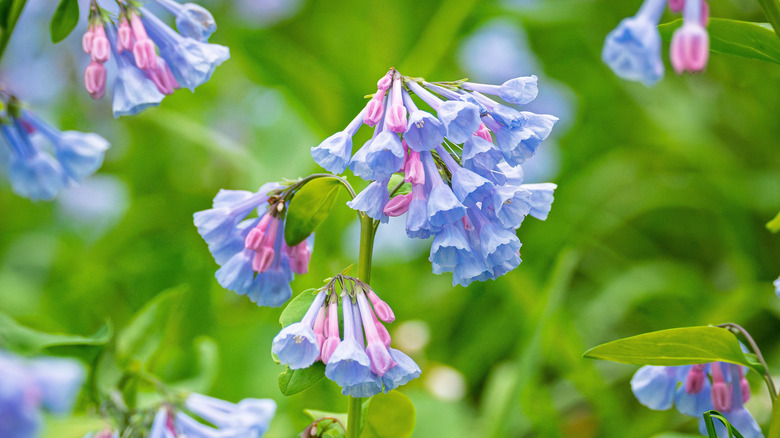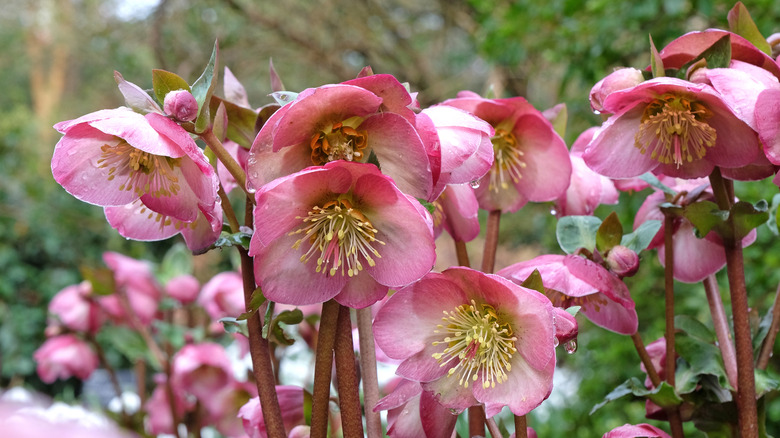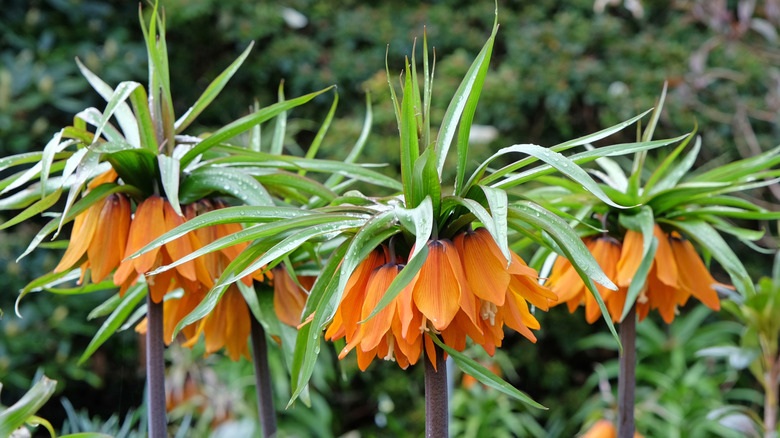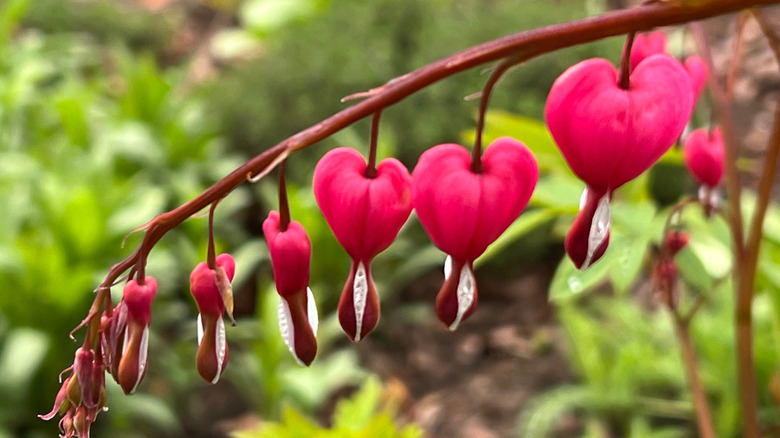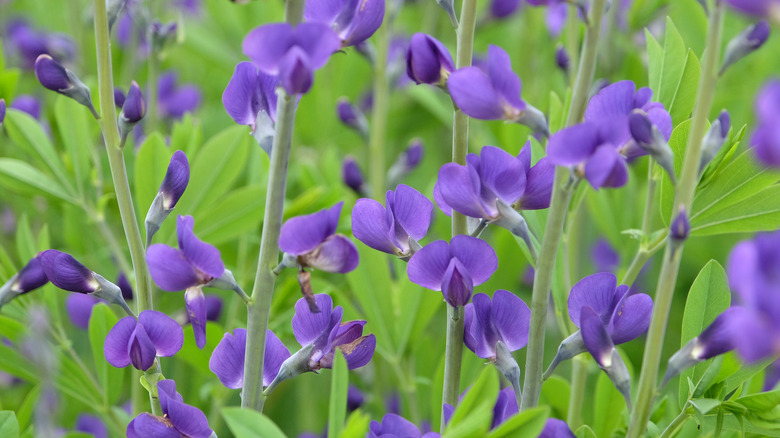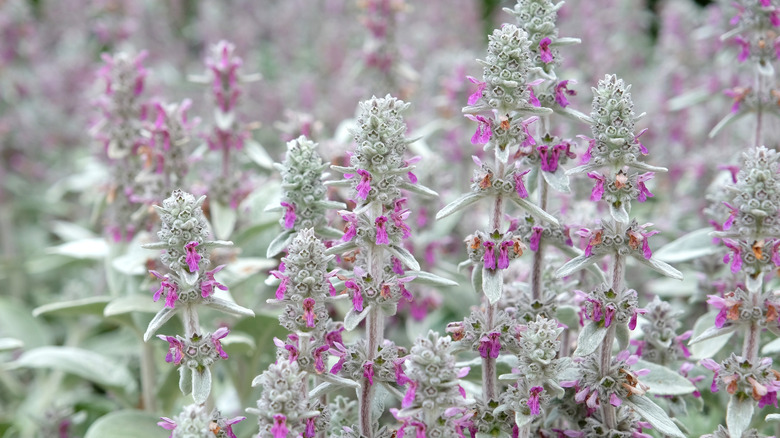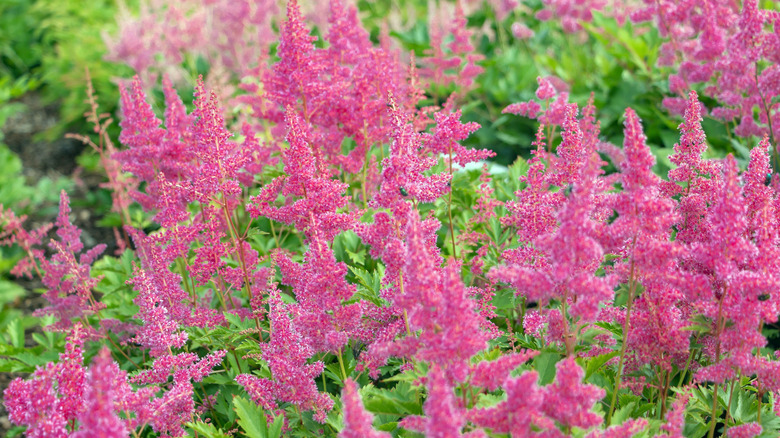11 Perennials To Plant In October To Attract Hummingbirds In The Spring
With fall in full swing, sunny spring days and flowers may not be the first thing on your mind. However, while the approaching colder weather may feel like a sign to store away your garden tools for the season, October can actually be the perfect time to prepare for spring. This includes adding new perennials to your garden that will flourish once spring arrives once more, filling your garden with color — and hummingbirds.
If you want to start a pollinator garden with hummingbirds in mind, the key is to pick the right flowers. Hummingbirds are attracted to flowers rich with nectar, and they're especially drawn to bright colored tubular flowers. Fortunately, many of the perennial flowers that end up on a hummingbird's preferred menu, like Virginia bluebells or bleeding hearts, can be planted in October, giving you a head start on your spring garden.
When choosing the best perennials to plant in October to attract spring hummingbirds, the most important factors to keep in mind are USDA growing zones and hardiness. Some flowers that can thrive when planted in colder weather in one region may fail in others. As a result, make sure to research how a plant grows in your specific area before running to your local nursery.
Catmint
If your goal is to attract hummingbirds, catmint (Nepeta spp.) may seem like an interesting choice. However, while it is true that this plant can attract cats — which could spell bad news for visiting hummingbirds since outdoor cats can kill them — its flowers can draw these little birds in. If you live in an area where its safe to plant catmint for hummingbirds without fear of prowling predators, sow in the fall for blooms in late spring. When caring for catmint, keep in mind it's also hardy in zones 3 through 8.
Columbine
If you're looking for another full sun or partial shade plant, look no further than columbine (Aquilegia spp.). Columbine produces striking flowers, with a bright and vibrant range of colors that adds life to your yard. You can sow columbine seeds during the fall months, including October. Then, once spring rolls around, look for blooms in April and May. When it comes to hardiness, expect this flower to do best in zones 3 through 8.
Phlox
Phlox (Phlox spp.) offers long-lasting colorful blooms in the spring, with eye-catching pink and purple flowers that hummingbirds love. This is especially true given the tubular shape of some species, which hummingbirds prefer due to easier access to nectar. While phlox can be planted during the spring, you can also plant it early on in the fall — aim for a month before the first frost in your region. Phlox is hardy in a variety of climates, from zone 3 to 9. Plus, it can grow in full sun or partial shade.
Eastern bluestar
The eastern bluestar (Amsonia tabernaemontana) is a tall, thriller plant that can add dramatic visual appeal to your yard — all while creating an inviting place for your little feathered friends to visit come spring. It can grow up to three feet tall, with tubular flowers that look like stars at first glance. It also has a large range for hardiness, from zone 3 to 9. When starting eastern bluestar seeds in the fall, prepare to overwinter them in a protected area if needed. These stunning flowers often bloom around April.
Virginia bluebells
If you like the look of the eastern bluestar's flowers but want something with a softer appearance, then Virginia bluebells (Mertensia virginica) might be the right choice for you. These plants thrive when planted in the fall, making October and the surrounding weeks a good time to add this plant to your garden. Plus, while they have similar tubular blue flowers as the eastern bluestar — which attract hummingbirds and other pollinators —they lack the sharp, star-like appearance and instead offer full and round petals. These shade-loving flowers are hardy in zones 3 through 9.
Hellebore
Also known as Christmas roses, hellebores bloom in the spring as well as the winter, offering hummingbirds an extra source of food. However, while this long-living perennial can be a top pick for flowers to plant in October, it's important to know that this plant is highly toxic. Contact with the plant can lead to irritation, and ingestion can have severe, even fatal, side effects. As a result, you may wish to avoid it if you have children or pets in your yard. If you do decide to plant these, they're hardy in zones 5 through 8.
Crown Imperial
The crown imperial (Fritillaria imperialis) has a distinct appearance that will stand out in your garden, with ground-facing clusters of tubular flowers. Plus, once it blooms in the spring, its bright yellow and orange colors can draw hummingbirds in, encouraging more of these interesting birds to visit your yard. When you plant these in the fall, prepare to mulch the bulbs, especially as winter approaches. They're hardy to zones 5 through 8 and grow best in either full sun or partial shade.
Bleeding heart
Crown imperials aren't the only flower with a unique appearance on this list. Bleeding hearts (Lamprocapnos spectabilis) are aptly named, with pink and white heart-shaped flowers that hang from a vine-like branch. Although you can plant them during the fall months, they're one of the first flowers to bloom come spring, giving hummingbirds an early source of food as they settle in for the breeding season. You can grow bleeding hearts in partial or deep shade, or, in the cooler areas of its range, you may have success with full sun. They're hardy to zone 3 through 9.
False indigo
False indigo (Baptisia spp.) produces tall stakes with flowers ranging from white to blue. There are a variety of species of this plant, including blue false indigo (Baptisia australis), the eye-catching but toxic plant that hummingbirds love. Overall, false indigo isn't picky, tolerating a variety of soil types and pH levels, so long as it has good drainage, although the specifications this plant can vary based on the exact species. Blue false indigo is hardy in zones 3 through 9. It can be planted in the fall where the cold helps it germinate and bloom in late spring.
Lamb's ear
Although it does produce flowers that attract hummingbirds with their pink and lavender colors, the highlight of the lamb's ear (Stachys byzantina) plant are the fuzzy leaves that give it its name. Generally, lamb's ear, which is hardy in zones 4 to 9, is planted during the spring. However, you can also plant it later in the year, so long as you take the steps to help it thrive. This includes giving this interesting flowering plant plenty of time to get established before winter so you can enjoy its blooms in late spring.
Astilbe
Astilbes (Astilbe japonica) are large plants that grow up to 2.5 feet tall and wide. Instead of traditional flowers, they sport spikes of long, feathery blooms that grow in a variety of colors, helping you tailor your garden to your preferences while also attracting hummingbirds. Astilbes do well in deep and partial shade and dappled sunlight in zones 4 to 9, making it a good option for shaded yards. Because cold stratification can boost germination for more flowers come late spring, planting in October can give you astilbes the head start they need.
